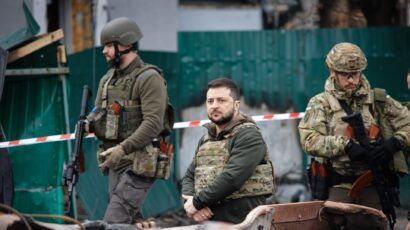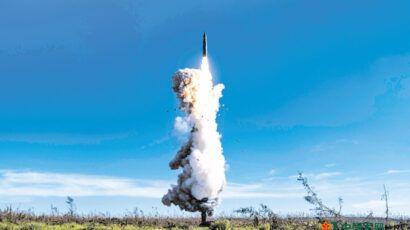Smallpox: The long goodbye
By Jeanne Guillemin | July 21, 2014

Last week, six vials of smallpox virus were discovered in a disused closet at the National Institutes of Health, where they had lain, forgotten and misplaced, for over 30 years. Some of them were found to contain live specimens, meaning that this dangerous virus—once considered to have been eradicated from the face of the planet—had the capacity to infect and spread.
At nearly the same time, on July 16, the director of the Centers for Disease Control and Prevention, Thomas Frieden, admitted to a Congressional committee that he was advised of a somewhat similar blunder at the CDC, more than two months after its discovery. (Members of the CDC had accidentally contaminated an innocuous strain of avian influenza with the dangerous H5N1 strain and shipped this unknown hazard to a less secure laboratory.) And not long before, dozens of CDC lab employees had been exposed to virulent anthrax bacteria.
These incidents raise doubts about government vigilance, with the case of the misplaced smallpox vials being arguably the most shocking, because the 1979 global eradication of smallpox is rightly celebrated as one of the most important public health achievements in history.
The eradication effort. The 13-year campaign to eradicate smallpox, led by the World Health Organization, stopped an ancient scourge that as late as 1967 was afflicting 10 to 15 million people per year and killing some 2 million, most in the Middle East, South Asia, and Africa. The variola virus causing the disease could kill as many as 30 percent of those infected, and its symptomatic blistering could permanently scar its victims and even leave them blind. Easily communicable by personal contact, for centuries it had struck nomadic tribes, village communities, and urban centers with equal brutality.
As Donald Henderson, the American leader of the campaign, observed, the timing of the campaign was perfect. Nations like Afghanistan, Pakistan, Iran, India, and Uganda were in phases of relative political stability and willing to cooperate. Putting aside Cold War hostilities, the United States and the Soviet Union together donated 180 million doses of vaccine and, along with other industrialized countries, contributed much to the campaign’s financial support and public health expertise. Thousands of intrepid field workers traversed rough terrain to reach settlements where smallpox still raged and, once there, isolate the sick and vaccinate those exposed.
Although altruism drove the campaign, leaders of the major industrialized states were motivated by a pragmatic fear of contagion. North America and Western Europe, where indigenous smallpox had been eliminated, still remained vulnerable to travelers arriving from countries where reservoirs of the disease persisted. The United States alone was spending over $1 million a year on childhood vaccinations, border surveillance, and quarantines—with good reason. In 1947, a fatally infected American returning from Mexico triggered a crisis in New York City that led to the emergency vaccinations of an estimated 6 million people. In 1961, a Pakistani visitor to Britain started an outbreak that required the vaccination of 5.5 million. In 1972, all of Yugoslavia was put under quarantine and 20 million people were vaccinated after a pilgrim returning from the Middle East started a chain reaction of virulent smallpox that quickly spread from Kosovo to Belgrade. The casualties were few but the bottom line was that even one smallpox case could shut down commerce, close cities, and create a financial crisis.
To be certified free of smallpox, each nation had to show the WHO that two years had elapsed since the last recorded case and that it had in place an effective surveillance system for case reporting. In October 1979, with the certification of Somalia, the job was done and the global campaign—the first to eradicate a disease—was concluded. On May 8, 1980, the final documents were signed in a festive ceremony at the Palace of the League of Nations in Geneva.
The world’s last recorded death from smallpox, in 1978, happened not in Somalia, but in the United Kingdom, the result of a faulty ventilation system at the Birmingham University Medical School. The victim, a 40 year-old photographer, worked on the floor above a laboratory where researchers were doing experiments using a virulent strain isolated from a child in Pakistan.
Attempts at controlled research. In reaction to the Birmingham accident, the WHO required all states to submit their existing strains and isolates to one of two high-security laboratories: the Centers for Disease Control and Prevention in Atlanta, Georgia, or the Soviet Research Institute of Virus Preparation in Moscow. Research involving these repositories (with 229 strains of the virus in the United States and 120 in the Soviet Union) could be conducted only with WHO approval and under tight security. Before the strains disappeared, microbiologists wanted to pursue the genetic analysis of the major strains, discover paths to new vaccines and antiviral medicines, and make comparative studies with animal poxviruses (like monkey pox and camel pox) that might fill the void left by smallpox.
In 1986, with no new smallpox cases reported, the World Health Assembly, the decision-making body of the WHO, resolved to destroy the strain collections and make the virus extinct. But there was resistance to this; American scientists in particular wanted to continue their research. Meanwhile, less advantaged countries that had suffered much from the disease demanded final closure.
The scientists won.
Within just a few years, the opportunity to destroy the stocks passed as the threat of smallpox reappeared in a new guise, this time as a potential weapon developed by an old enemy and possibly acquired by a new one. Even before the collapse of the Soviet Union, British and American intelligence agencies were learning about the massive USSR biological warfare program, which included smallpox. The secret program was expanding at the same time as the WHO campaign and the establishment of the Moscow repository–and long after the Soviets had signed the 1972 Biological Weapons Convention. Could the Russians be trusted? Would terrorists gain access to the repository, which had been moved from Moscow to Novosibirsk, Siberia?
In the cease-fire after the 1991 Gulf War, international investigators found evidence that Iraq, where smallpox was once endemic, had developed a covert biological arsenal. Defenses against the disease soon became a top US priority, one that joined national security, biomedical science, and public health. In 1999, in a post-Cold War turn-around, the US government funded a series of joint smallpox research projects between the CDC and Vector, the institute in Siberia where the Soviet repository had been moved.
After the 9/11 and the 2001 anthrax letter attacks, advocates for biodefense funding, including Henderson, kept promoting the smallpox threat. In December 2002, in the lead-up to the Iraq War, the threat was taken seriously enough for President George W. Bush to announce a nationwide smallpox inoculation campaign, starting with the mandatory vaccination of 500,000 military and government employees and an equal number of voluntary health workers and first responders. Following this first phase, 10 million more volunteers at the front lines of a bioterror attack could choose to be vaccinated and then the vaccine would be available to the public at large. Early reports of adverse reactions associated with the vaccine—in the form of serious rashes, fevers, and cardiac arrests—sharply reduced participation. By March, 2003, only 30,000 volunteers had been vaccinated and in May the Iraq War was over.
But smallpox did not disappear as a terrorist threat, nor did anthrax or plague. In 2002, the US Congress began authorizing billions of dollars a year in new funding for research on “select agents” such as smallpox, anthrax, and plague to protect Americans from catastrophic bioterrorist attacks. New national centers for biodefense research were established. The funds directly benefited research on smallpox at the CDC and at Vector in Siberia, and fostered a new generation of researchers who depend on the smallpox repositories—even though, in the absence of any incidents, the disease’s threat as a biological weapon has faded and the world has been officially rid of smallpox for 34 years.
Why smallpox stocks should be destroyed. In the years since 1986, when the World Health Assembly first resolved to destroy the repositories, the science for understanding infectious diseases and inventing defenses against them has made significant advances. Overall, the trend has been away from pathogen-specific research and toward projects that investigate the molecular and cellular processes of a broad spectrum of disease types, orthopoxes like smallpox among them.
In its 2013 report on smallpox, the WHO Advisory Group of Independent Experts (AGIES) specifically noted that this trend in science had diminished the need to use the live variola virus for research. The group concluded that there was no public health need to retain the smallpox stocks, whether for the creation of new diagnostic tests, for use in animal models, or for the development of new vaccines or antiviral agents. Researchers were achieving these goals without relying on the live virus. Furthermore, DNA sequencing of 50 repository strains showed so little diversity among them that the committee also concluded that the stocks were not worth preserving in order to sequence more.
So why in May 2014, at its review meeting, did the World Health Assembly again decide to delay the destruction of the smallpox strains? The answer lies in the opposing views of the WHO’s other smallpox advisors, the members of the Advisory Committee on Variola Virus Research (ACVVR), which is dominated by US, Western European, and Russian scientists. In its 2012 report, this committee also concluded that live virus strains were no longer needed to research diagnostics or develop vaccines and that the continuation of DNA sequencing was unnecessary. Nonetheless, its members believed that the variola virus itself was needed to further explore animal models for the disease and to develop antiviral agents against smallpox, projects in which they were invested. With its two advisory committees in conflict, the WHO is organizing a third advisory committee to arbitrate the two perspectives—public health and basic science.
Not only has science moved along, but public confidence in high containment laboratories is on the wane, which is bound to influence policies regarding the smallpox stocks. In the recent past, the CDC in Atlanta has experienced power outages and other technical failures, and the organization is now in the news for laboratory mistakes that risked the lives of employees and potentially the wider public.
American and Russian officials always insist that their smallpox repositories, under WHO oversight, are well guarded. But experience tells us that scientists working in laboratories with the highest biosafety standards are still caught off guard by technical breakdowns, that their staffs make mistakes and break rules, and that a predictable institutional reflex is to cover up blunders. So why should the world continue to take chances with smallpox? The best protection for both scientists and the public is to load the autoclave and bid a final goodbye to the variola virus.
Together, we make the world safer.
The Bulletin elevates expert voices above the noise. But as an independent nonprofit organization, our operations depend on the support of readers like you. Help us continue to deliver quality journalism that holds leaders accountable. Your support of our work at any level is important. In return, we promise our coverage will be understandable, influential, vigilant, solution-oriented, and fair-minded. Together we can make a difference.
Topics: Analysis, Biosecurity















